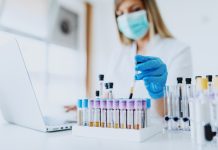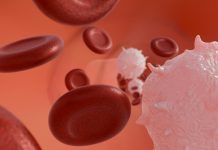Melanoma is one of the most aggressive cancers in the human population. In addition to its aggressiveness, it is also the only one of the 7 most common cancers that are actually becoming more frequent. The worldwide incidence of melanoma is unstoppably rising over the last half of the century, reaching a multi-fold increase since the 1950s. It is estimated that the number of people directly affected by melanoma is
132,000 per year globally and that about 30,000 people annually die as a consequence of developing melanoma.
Due to its apparent nature and mostly superficial occurrence, it is subject to identification by pure visual inspection (in most cases). It also makes it one of the most preventable cancers, as it is possible to detect in its early forms, while it is still In-Situ.
To date, the most effective way of preventing melanoma mortality and morbidity relies on early detection of melanoma, before it reaches more advanced stages that are accompanied by metastases.
Not to be underestimated is also the cost associated with late-stage detection and treatment of melanoma, with U.S. estimates that a stage IV melanoma costs 2200% more than an early In-Situ melanoma, in treatment terms.
Speaking in absolute terms, the associated costs for Melanoma in Denmark were estimated to be almost €15m per year, but it has to be noted that the population is just 5.5 million.
Current attempts to combat this lethal issue are mainly composed of primary prevention campaigns, educational brochures, leaflets, and general provision of information regarding the diagnostic criteria (ABCDE, Glasgow 7-point check list) to the lay public, in order to raise awareness about potential suspicious lesions that should be further examined by a professional.
In addition to simply informing the public in order to improve knowledge and awareness, other methods, such as Skin Self-Examination (SSE) have been described as important conveyors of public education and awareness. As a tool of unprecedented value in the early detection and screening for melanoma, the patient-based Skin Self-Examination is a procedure that consists of thorough inspection of pigmented skin lesions by patients themselves.
A number of additional practices to improve on the basic SSE performed by patients have been developed and documented by studies in the recent years, such as the inclusion of visual images and photography in the process of Skin Self-Examination. These kinds of additional actions have been proven successful and they show that the use of visual images and similar image capturing and storing approaches to
SSE by using Skin Self-Photography positively affects knowledge and motivation of SSE, and provides encouragement for the patient to take a more active role in detecting early melanomas.
To no surprise, with the explosive growth and penetration of the smartphones equipped with high-quality cameras capable of capturing high-resolution images of sufficient quality, the use of a smartphone as a tool for obtaining and storing the baseline images has become a reality. The use of smartphones for such exercises has been published recently, with the conclusion that new technologies can help and improve
Skin Self-Examinations by providing a medium for protocoled images and body mapping.
The time for a new take?
TeleSkin, an award-winning high-tech life science company is introducing a smartphone software application called skinScan, a well-rounded information resource tool to assist the population in appropriately determining the Pigmented Skin Lesions of interest by interactively delivering useful information to the user. It enables them to recognize and graphically appoint the lesion to a particular location for future references, and also to communicate with a skin cancer specialist in an easy and convenient way.
The availability of this information, but in the form of a smartphone software application, a thing very common, interactive and intuitive, can bring a new perspective to raising awareness and informing the public.
What the almost-present future holds?
With the increasing number of eHealth services and mHealth applications being developed and the ever-increasing number of users over the course of the last 4 years, it is becoming clear that the public is ready to take a front seat in their own health activities and become involved. This approach just may be a perfect pivotal point in Healthcare Management on a Country-level scale, as it could introduce a whole new way of conducting screening for Melanoma, shifting the burden from the Health – care Systems to the public themselves, saving valuable time for the patients and significantly reducing the healthcare costs associated with both Advanced Melanoma patients and the surveillance and follow up visits, as it provides a simple, easily available solution. TeleSkin’s app skinScan is marketed as a Class I Medical Device and is bearing a CE mark in accordance with the EC MDD/93/42.
Zeljko Ratkaj
Director
TeleSkin ApS
Tel:+45 22 80 98 14
contact@skinscan.com











